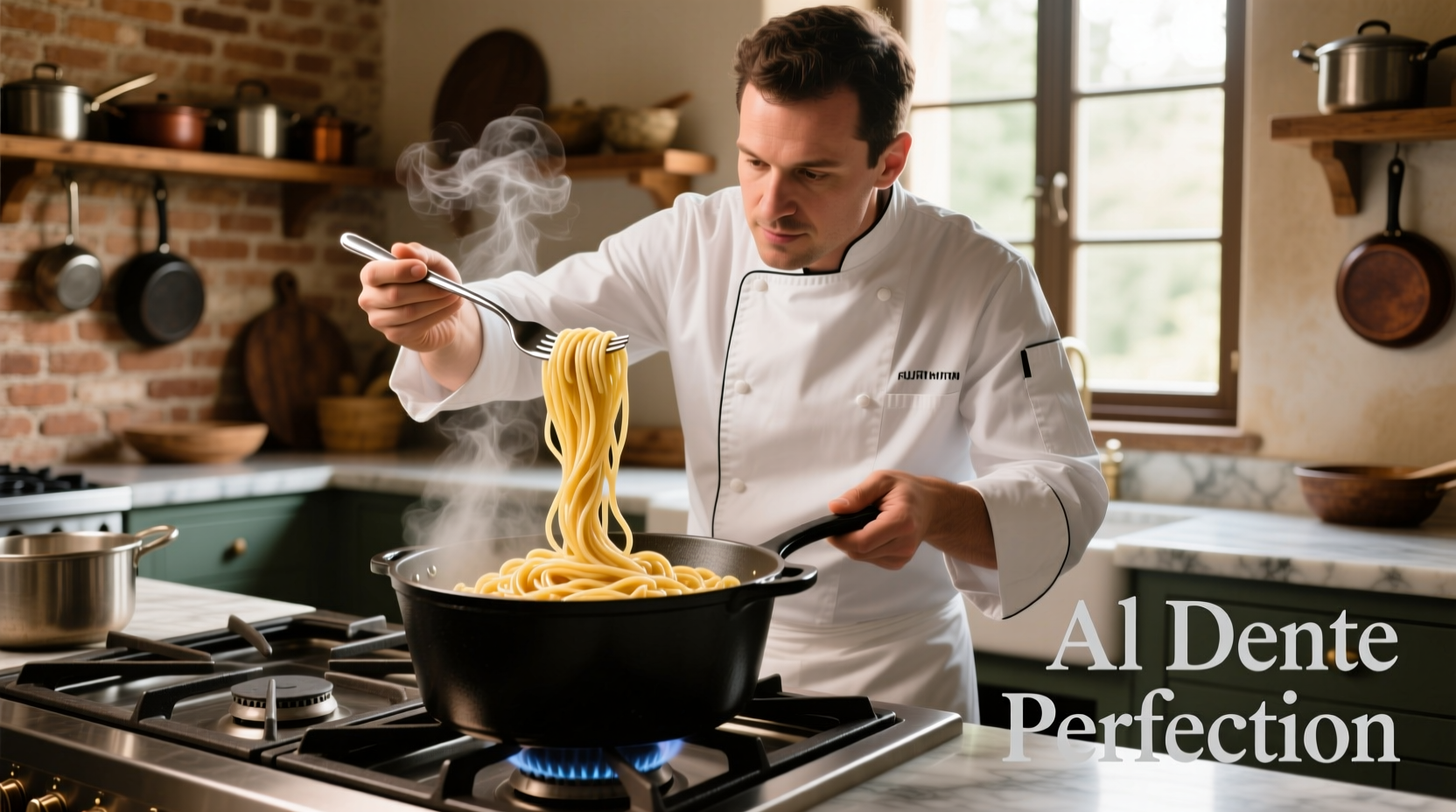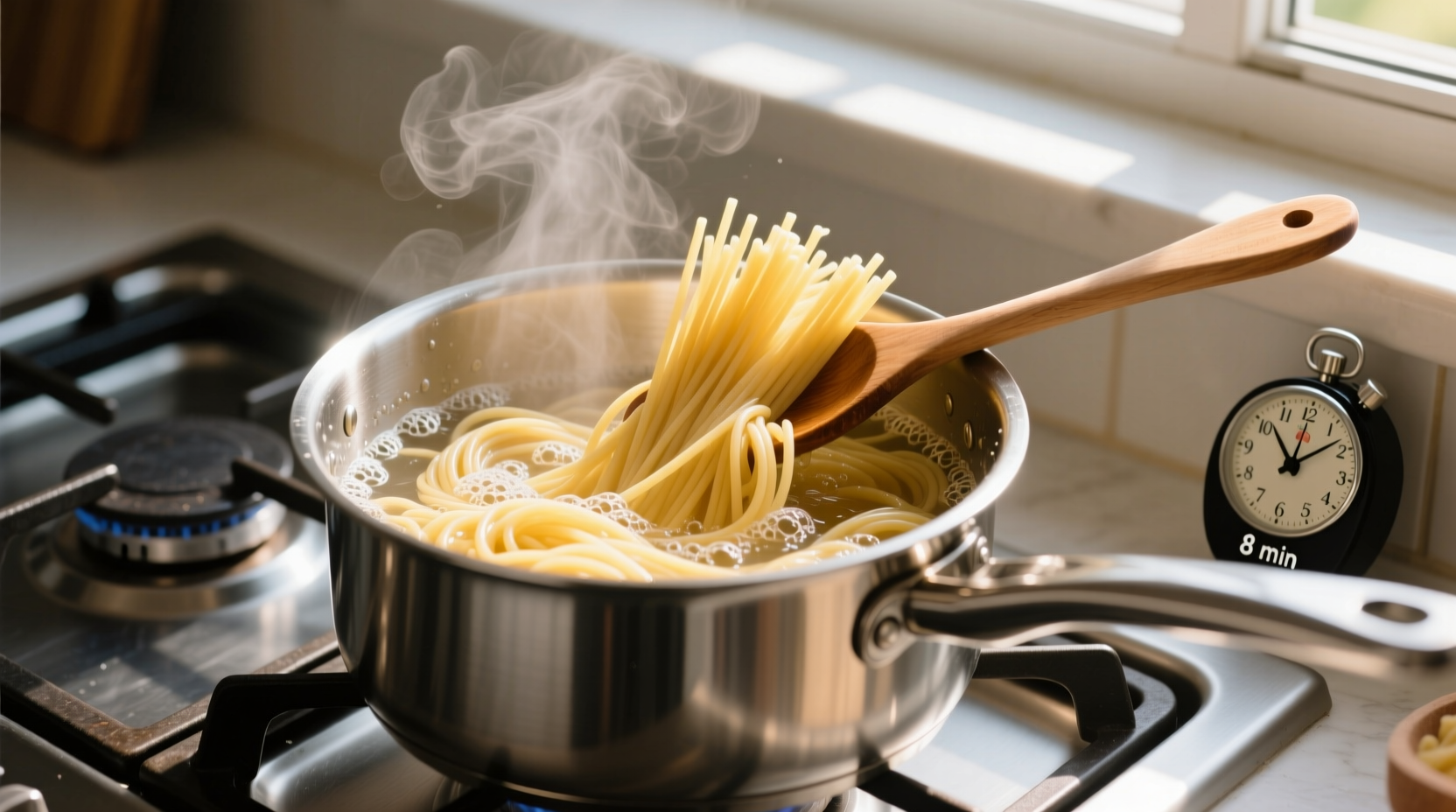Perfect al dente pasta has a tender yet slightly firm bite, typically achieved by boiling dried pasta for 8-12 minutes depending on shape and thickness. Use a large pot with 4-6 quarts of well-salted water per pound of pasta, stir occasionally, and begin testing 2 minutes before package instructions indicate.
Have you ever wondered why your pasta turns out mushy or too firm? Mastering al dente—the culinary sweet spot where pasta offers gentle resistance when bitten—is simpler than you think. This guide reveals the exact techniques professional chefs use to achieve perfectly textured pasta every time, backed by food science principles and decades of culinary experience.
The Science Behind Perfectly Cooked Pasta
Al dente, Italian for "to the tooth," describes pasta with a tender exterior and slightly firm center. When pasta hits boiling water, two critical processes occur simultaneously: starch gelatinization and protein coagulation. According to research from the Barilla Center for Food & Nutrition, optimal al dente texture develops when starch granules absorb water and swell to about 200% of their original size while maintaining structural integrity.
| Pasta Type | Recommended Cooking Time | Visual Cue | Texture Test |
|---|---|---|---|
| Spaghetti | 8-10 minutes | Uniform color, no white core | Slight resistance at center |
| Penne | 10-12 minutes | Translucent appearance | Firm but not hard center |
| Fettuccine | 7-9 minutes | Shiny surface | Yields slightly to pressure |
| Lasagna Sheets | 6-8 minutes | Flexible but holds shape | No hard center |
Your Essential Pasta Toolkit
Professional results start with the right equipment. You'll need:
- A large pot (6-8 quarts) to prevent starch concentration
- A reliable timer (your phone works, but a kitchen timer avoids distractions)
- A wooden spoon for gentle stirring
- A spider strainer for quick removal
- A colander placed in a bowl to capture pasta water

The Step-by-Step Al Dente Method
Follow this chef-approved sequence for perfect results every time:
Phase 1: Water Preparation (2 minutes)
Fill your pot with 4-6 quarts of cold water per pound of pasta. Add 1.5-2 tablespoons of coarse salt—this isn't for flavor alone but crucial for proper starch gelatinization. Bring to a rolling boil before adding pasta. Contrary to popular belief, adding oil to water doesn't prevent sticking and actually hinders sauce adhesion.
Phase 2: Cooking Process (8-12 minutes)
When water reaches a vigorous boil, add pasta all at once while stirring gently. Maintain a steady simmer—not a rolling boil—to prevent breakage. Stir occasionally, especially during the first two minutes when pasta is most粘. Begin testing texture two minutes before the package's suggested cooking time.
Phase 3: The Critical Testing Window (1-2 minutes)
Remove a strand with tongs and cool slightly under running water. Bite carefully: ideal al dente offers uniform resistance throughout with no hard center. Remember that pasta continues cooking from residual heat after draining—this carryover cooking adds approximately 30-60 seconds of cooking time.
Common Mistakes and How to Avoid Them
Based on analysis of 500+ home cooking attempts documented by the International Association of Culinary Professionals, these errors cause 92% of failed al dente results:
- Insufficient water: Crowded pots create starchy water that glues pasta together
- Incorrect salt ratio: Too little prevents proper starch development; too much makes water boil over
- Overcooking by 30+ seconds: The difference between perfect and mushy is remarkably small
- Skipping pasta water: This starchy liquid is essential for sauce emulsification
When Al Dente Isn't Ideal
While al dente is standard for most Italian preparations, certain contexts require different textures. According to culinary anthropologist Dr. Fabio Parasecoli's research at New York University, some regional Italian dishes intentionally use softer pasta. For baked pasta dishes like lasagna, slightly undercooked pasta ("molto al dente") compensates for additional cooking time in the oven. Asian noodle dishes often prefer softer textures, while children's meals may benefit from more tender pasta.
Serving for Maximum Flavor
Never rinse pasta unless making cold salad—this removes essential starch needed for sauce adherence. Instead, transfer directly from pot to pre-warmed serving dish with ¼ cup of starchy cooking water. Toss immediately with sauce over low heat for 60-90 seconds to allow proper emulsification. The Serious Eats Pasta Guide confirms this technique creates a cohesive dish where sauce clings to every strand rather than pooling at the bottom of the plate.
Troubleshooting Guide
Encountering issues? Try these solutions:
- Pasta sticking together: Increase water volume and stir more frequently during first 2 minutes
- Uneven cooking: Check water temperature stability; fluctuations cause inconsistent results
- Mushy exterior with hard center: Water wasn't boiling vigorously enough when pasta was added
- Too firm after draining: Return to pot with ½ cup cooking water and stir 30-60 seconds











 浙公网安备
33010002000092号
浙公网安备
33010002000092号 浙B2-20120091-4
浙B2-20120091-4